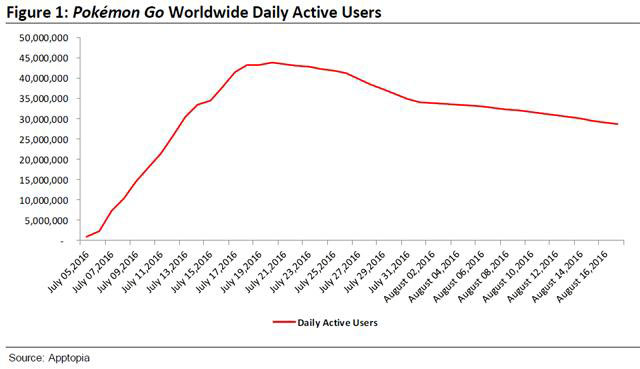Six months after Pokemon Go’s initial release in most countries, the most anticipated app of 2016 finally reached South Korea on January 24th. Due to South Korea’s legal issues with Google Maps, which the game requires for external support, Pokemon fans unfortunately had to wait half a year until they were given the chance to experience their childhood dreams transformed into virtual reality.
Pokemon Go was released on July 6th and its popularity quickly peaked only a week later. Following its release, the game surpassed some of the most popular social media applications—including Twitter, Snapchat, and Instagram—in terms of the daily number of hours spent on the app. Various viral videos showed footage of hundreds or even thousands of players swarming to a single location where a rare Pokemon emerged.

However, it did not take too long for the craze to ebb. A month after the game was released; the number of active monthly users began to decline sharply. Even after various updates introduced multiplayer modes, the creators failed to live up to the game’s initial level of popularity.

The game followed a similar trajectory following its South Korean release. In the middle of winter, ardent Pokemon Go fans travelled great distances to catch rare Pokemons, despite the cold weather and unpleasant circumstances. Pokemon Go players were seen swarming around public parks and nearby cafes, which strictly mirrored the behavior of players from all around the world.

However, even after all the anticipation by avid Pokemon fans in Korea, the hype that kept fans impatiently waiting died down about a month after its release. It seems as if the game had a trick for attracting millions of fans to play when they are given the first opportunity to virtually relive their childhood dreams. But what accounts for the game’s quick decline?
The game contains enough content to keep its players satisfied for a certain amount of time, but even after the constant and desperate updates to replenish interest, the game has struggled to maintain its popularity. A possible cause for this phenomenon might be the game’s purpose. While it may be enjoyable to go out and search for Pokemon a couple of times, the game loses the players’ interest. In addition, the game generally has no purpose in playing besides awarding players bragging rights to their friends. It lacks the competitive or skillful gameplay that most popular games like League of Legends and Starcraft have seemed to provide in the past decade.
Pokemon Go broke multiple records following its release, definitely living up to the hype that Nintendo created. However, Pokemon Go has struggled to maintain its popularity. This indicates that the game’s content does not appear to be the problem, but rather the design and the game play. Since reaching its peak in mid-July, the game has continued to decrease in popularity. With no signs of recovering, Pokemon Go may fail to meet the expectations fans once had prior to its release and completely fade away, only to be remembered as the overhyped game.

Sangyoon Lee
10th Grade
Seoul International School
By Sangyoon Lee

